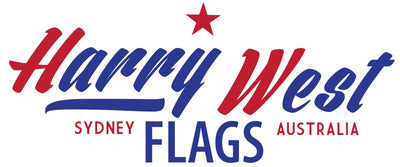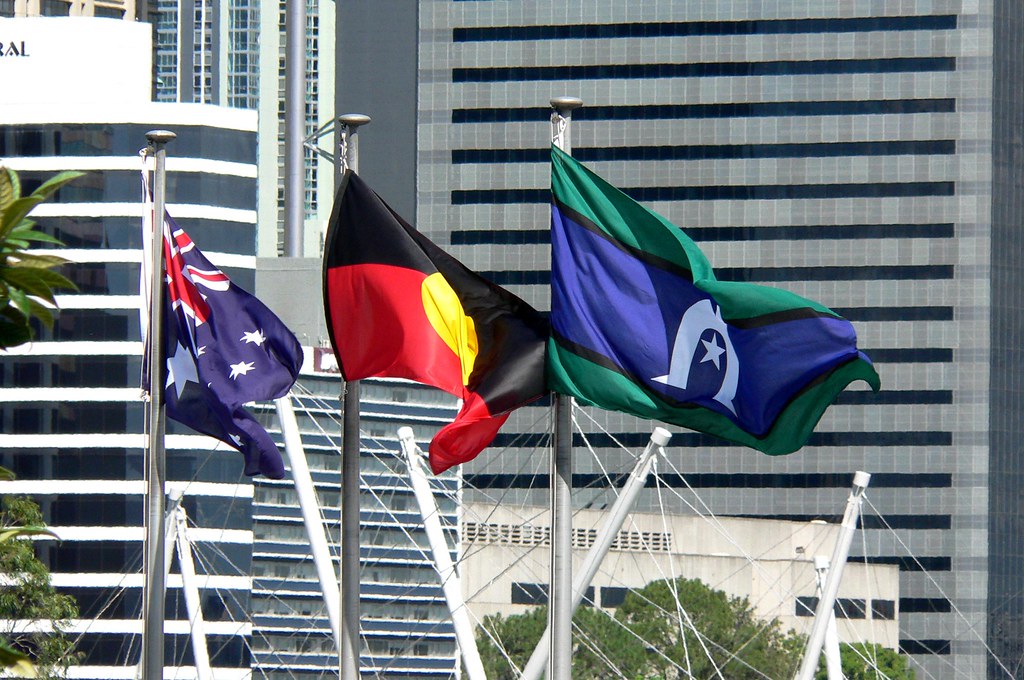Australian Flags
Australia is a land of diverse cultures, histories, and identities, and one of the most visible representations of this diversity is found in the flags that fly across the nation. While the Australian National Flag, with its Union Jack and Southern Cross, is instantly recognisable, two other flags often fly alongside it in many important settings; The Aboriginal Flag and the Torres Strait Islander Flag. These flags hold such significance in Australia and substantially more significance than the Australian Flag for First Nations Peoples. These flags play a vital role in shaping Australia's national identity and are powerful symbols of the rich cultural heritage of Australia's First Nations people. The Aboriginal and Torres Strait Islander Peoples' of Australia are the oldest continuous culture on Earth, and their their flags represent this.
The Aboriginal Flag
Designed by Harold Thomas in 1971, the Aboriginal flag is a striking representation of Aboriginal identity and pride. Its bold colours of black, red, and yellow hold deep symbolism. The black represents the Aboriginal people, the red symbolises the earth and their spiritual connection to it, and the yellow circle represents the sun, the giver of life. Together, these elements create a flag that speaks to the resilience, strength, and enduring culture of Australia's Indigenous communities.
One of the most significant aspects of the Aboriginal flag is its ability to unify Indigenous peoples across Australia. It serves as a symbol of solidarity and empowerment, fostering a sense of belonging and pride among Aboriginal Australians. The flag has been widely adopted in various contexts, from protests and political rallies to cultural events and celebrations, making it an integral part of Australia's social and political landscape.
The Torres Strait Islander Flag
Similarly, the Torres Strait Islander flag holds immense cultural significance for the Torres Strait Islander communities. Designed by Bernard Namok in 1992, this flag represents the distinct identity and heritage of the Torres Strait Islander people. The flag features a green horizontal band at the top and bottom, symbolising the land and sea, with a blue and white horizontal "Dhoeri" (traditional headdress) in the center. The five-pointed white star represents the five major island groups of the Torres Strait.
The Torres Strait Islander flag serves as a symbol of unity, cultural resilience, and connection to the land and sea. It is deeply intertwined with traditions, ceremonies, and storytelling within Torres Strait Islander communities. Like the Aboriginal flag, it is also widely used in community events, educational settings, and official ceremonies, showcasing the enduring heritage and contributions of Torres Strait Islander people to Australia's multicultural tapestry.
Flag Unity
Together, the Aboriginal and Torres Strait Islander flags represent the enduring spirit of Australia's First Nations people. They remind us of the importance of honouring and preserving Indigenous cultures, histories, and languages. These flags are not just colourful pieces of cloth; they are living symbols of resilience, pride, and identity.
In recent years, there has been a growing recognition of the significance of these flags in the broader Australian society. They are increasingly displayed alongside the national flag in public spaces, schools, and government buildings, reflecting a deeper appreciation of Indigenous heritage and a commitment to reconciliation and inclusivity.
As Australians, it is crucial to acknowledge and celebrate the contributions of First Nations people to our national identity. The flags of Australia's Indigenous communities are powerful reminders of the ongoing journey towards reconciliation, respect, and unity. They represent a shared heritage that enriches our collective identity as Australians.


